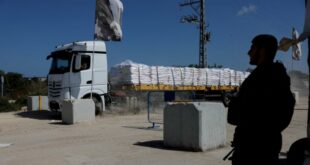HMCS Ottawa makes day-long passage, sandwiched between the armed ships of China and Taiwan

Royal Canadian Navy sends warship through contested Taiwan Strait
HMCS Ottawa entered the Taiwan Strait and was flanked by three Chinese warships armed with missiles and torpedoes. They shadowed Ottawa's moves for the entire crossing.
After months of secretive planning, and preparing the crew to defend their ship if necessary, the Royal Canadian Navy has transited the Taiwan Strait.
As HMCS Ottawa entered the busy and strategically critical body of water at sunrise, it was flanked by three Chinese warships armed with missiles and torpedoes. They mirrored Ottawa's moves for the entire 17-hour crossing.
Canada made the journey along with the USS Ralph Johnson, a U.S. Navy guided missile destroyer, in what both countries describe as a freedom of navigation exercise.
"Moving through the Taiwan Strait is to demonstrate a free and open Indo-Pacific," said Sam Patchell, the commanding officer of the Canadian ship. CBC News was aboard the ship as it made the transit.
"The only way we can do that is to come here and signal it."

China claims ownership of Strait
The Taiwan Strait is 160 kilometres wide at its narrowest point and separates mainland China from Taiwan. The Chinese government claims both Taiwan and the strait as its own, as has described previous naval crossings as "stirring up trouble."
Chinese Foreign Ministry spokesperson Wang Wenbin told a June news conference that China is firmly determined to defend its sovereignty and security and regional peace and stability.
Neither Canada, nor the U.S., recognize Taiwanese independence. Both are among a majority of countries that insist the Taiwan Strait is mostly international waters through which global commerce and warships may pass unhindered.
During the crossing, CBC News journalists saw that firsthand, with hundreds of cargo vessels leaving Chinese and Taiwanese ports bound for international destinations.
Many nations — including Canada — want to protect the Strait as an international waterway. Under international law, China has exclusive jurisdiction over the 12 nautical miles (22 kilometres) off its coastline. It also claims the zone off Taiwan's coastline.

But as a signatory to the United Nations Convention on the Law of the Sea, China does not have exclusive navigation rights beyond this area.
China has not yet responded officially to the Canadian and American navies crossing the Strait — though is likely to find it provocative, based on past reactions.

Chinese destroyers confront Canadian warship in waters off Taiwan
The Canadian frigate HMCS Ottawa, on a joint patrol mission with U.S. and Japanese warships in the East China Sea, had a tense moment with a Chinese-guided missile destroyer. A CBC News crew with exclusive access caught it on camera.
Canadian warship on high alert
All warships acted professionally during the crossing, maintaining safe separation from one another.
But the crew of HMCS Ottawa had spent weeks in workups before their deployment from Esquimalt, B.C., on Vancouver Island. Those drills included responding to torpedo and missile attacks, fire, collision and damage to the ship.
Chinese fighter jets did fly at an intercept course on multiple occasions toward the ship, but deviated from their course more than 30 kilometres away.
A Taiwanese warship also shadowed the Canadian moves, leaving HMCS Ottawa separating the two sides.
China has a stated intention to reunite the island with the mainland, and Taiwan fears it will do so with force. China now has the world's largest navy by number of ships, and has increased military spending exponentially in the past 15 years.

Canada among few countries making the crossing
While Canada's Navy is far from the world's largest, the country is one of the relatively few willing to send warships through the Taiwan Strait.
Prior to the September crossing, another Canadian frigate watched in June as a Chinese destroyer sped up and cut off the USS Chung Hoon, an American guided missile destroyer.
China has described the Taiwan Strait dispute as an internal issue, rejecting international interference.
But Yuki Tatsumi, co-director of the Stimson Center's East Asia program, a Washington think-tank, says Canada's involvement rejects that thinking.
"China will think twice about doing something as long as this issue gets more global," Tatsumi said.
"Peacetime expressions of interest could work against the [People's Republic of China] even thinking about resorting to violent scenarios."

Canadian frigate dodging vessels during crossing
The Taiwan Strait is crammed with vast cargo carriers and small fishing vessels. It requires those steering HMCS Ottawa to constantly be scanning the horizon and tracking contacts on their radar.
Chinese submarines are known to traverse the region, so lookouts on the command bridge of the Canadian ship were instructed to watch for periscopes peeking through the water surface, while sonar equipment in the ship's operations room was crewed at all times.
At one point, the USS Ralph Johnson deviated course abruptly in response to a small white boat.
At first glance, it appeared to be a fishing vessel. But closer inspection revealed an unusual radar system — leading to suspicion it could be an undercover surveillance vessel used by the Chinese military.

"Some police cars don't have the markings on the side, and some do," Patchell said as Ottawa moved around the suspicious vessel.
"We'll investigate it, take some imagery and share it with our team … there's all sorts of ways to obfuscate what you're doing out here."
HMCS Ottawa deployment continues
The Canadian frigate is on a nearly five-month deployment and is now plying the South China Sea, through which more than $4.6 trillion in cargo, a third of all global trade, passes each year.
The South China Sea is also subject to territorial claims by China, so Canada's freedom of navigation exercise will continue.

China contests ownership of certain islands, such as those long claimed by the Philippines.
It has also built artificial islands and has made territorial claims on the water surrounding them. It has placed military equipment on these islands and, between 2014 and 2016, constructed more new island surface than all other nations combined in history.
The United States has deemed China's claims in the South China sea to be unlawful.
ABOUT THE AUTHOR
David Common covers a wide range of stories for CBC News, from war to disrupting scams. He is a host with the investigative consumer affairs program Marketplace, and a correspondent with The National. David has travelled to more than 85 countries for his work, has lived in cities across Canada, and been based as a foreign correspondent in the U.S. and Europe. He has won a number of awards, but a big career highlight remains an interview with Elmo. You can reach David at david.common@cbc.ca, Twitter: @davidcommon.

Add some “good” to your morning and evening.
A variety of newsletters you'll love, delivered straight to you.
*****
Credit belongs to : www.cbc.ca
 Atin Ito First Filipino Community Newspaper in Ontario
Atin Ito First Filipino Community Newspaper in Ontario






